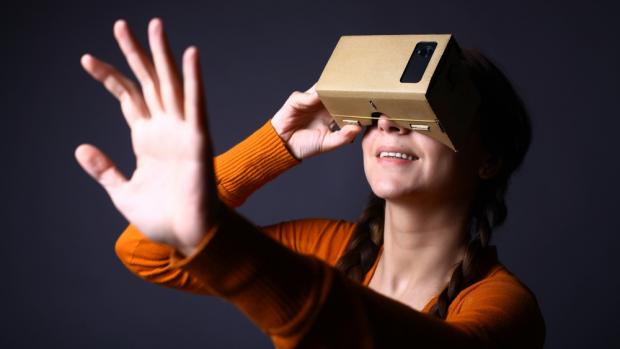Earlier in the week draws to a close, the Financial Times has provided the first details about the project with which Google returns to explore the emerging virtual reality market. According to the description given by the authoritative source, Google's new display would be an evolution of Cardboard, similar to the Samsung Gear VR. In recent hours the The Wall Street Journal has added more details all'identikit, outlining a product profile for slightly different reasons. The main change compared to the previous description is represented by the stand-alone nature of the product. Contrary to the Gear VR, which needs a smartphone to run the new Google VR viewer does not require either the connection to your smartphone, nor that the PC (the latter gave an important track groove also against products like Oculus Rift and HTC Lives ).
According to sources contacted by The Wall Street Journal, the device is not yet announced, "will include a screen, high-performance processors and cameras pointing outwards". A product that could offer so performance and a user experience that is midway between that of the most powerful viewers (like the above mentioned Oculus Rift and HTC Lives) and that of the cheaper solutions from Original Cardboard. One of the missing links to complete the identikit of the product covers the software sector. The ability to operate without constraints with external devices, determines the nature of things that the device management software and VR content must be installed inside the viewer. In this regard, there have been some rumors that refer to a new version of the Android operating system with native support for Virtual Reality (app and libraries needed to manage the hardware VR).
According to sources contacted by The Wall Street Journal, the device is not yet announced, "will include a screen, high-performance processors and cameras pointing outwards". A product that could offer so performance and a user experience that is midway between that of the most powerful viewers (like the above mentioned Oculus Rift and HTC Lives) and that of the cheaper solutions from Original Cardboard. One of the missing links to complete the identikit of the product covers the software sector. The ability to operate without constraints with external devices, determines the nature of things that the device management software and VR content must be installed inside the viewer. In this regard, there have been some rumors that refer to a new version of the Android operating system with native support for Virtual Reality (app and libraries needed to manage the hardware VR).
The Financial Times had stressed that the viewer will be developed following a model used by Google with the devices of the Nexus range, or with the direct design by Bigg and production entrusted to the network of partners. However, still it remains controversial status of the viewer development. One of the sources contacted by The Wall Street Journal says that the arrival is expected later this year, while another remains more cautious, stating that the project is currently in the early stages and is still being considered by the Google assessment You may also decide to delete it entirely. The home of Mountain View, to finalize it, could make use of the Movidius collaboration using head movement tracking technology developed by the California startup.
One thing is plain for all: the main consumer market brands are moving to propose their own solutions by structuring an offer VR undoubtedly articulated by the type point of view of products, think for Oculus, Samsung , Sony, HTC, Microsoft and the various rumors that Apple locate in one of the stakeholders to make entry into the VR market. Although the timing is not yet known, it is rather unlikely that Google remains simply to observe a market with excellent growth opportunities in the coming months.

Comments
Post a Comment